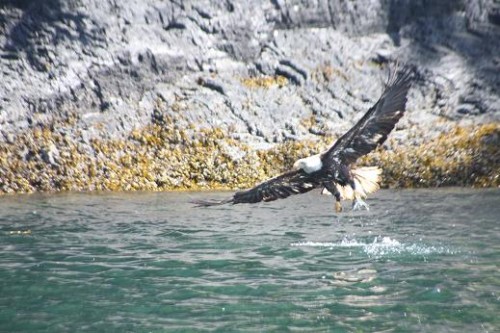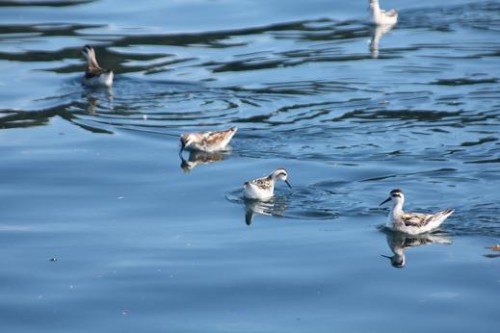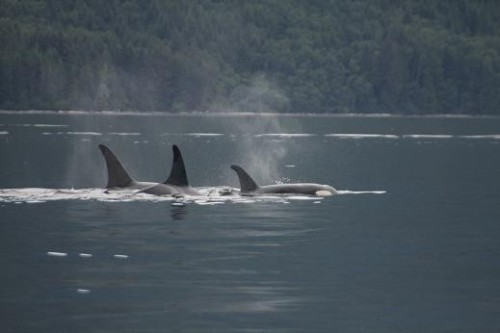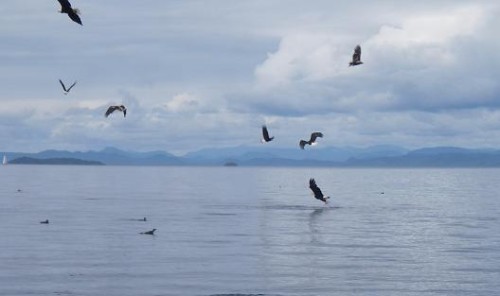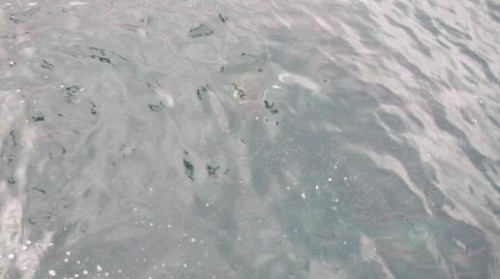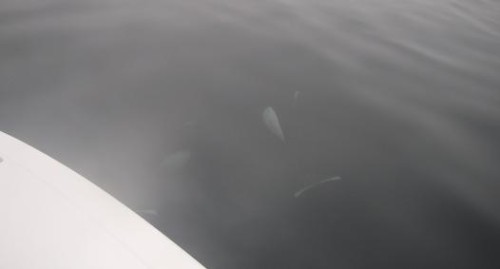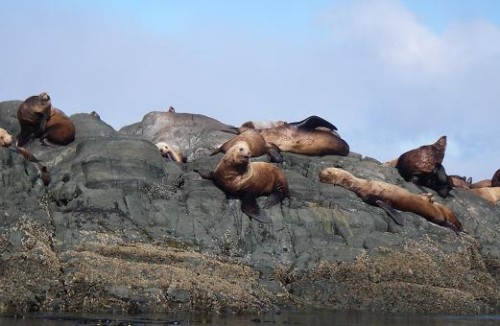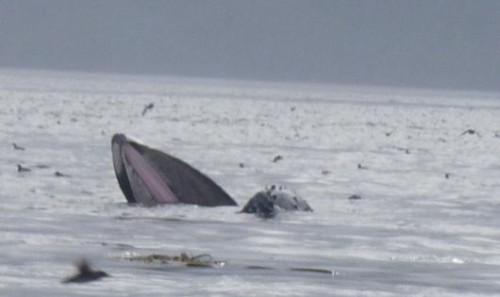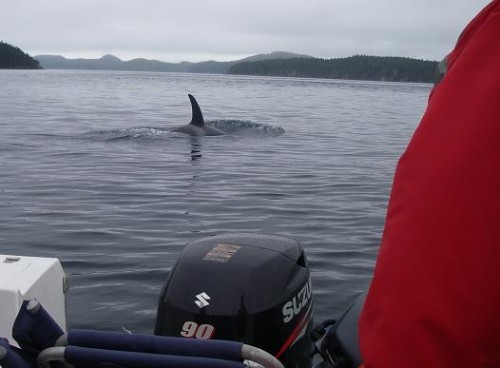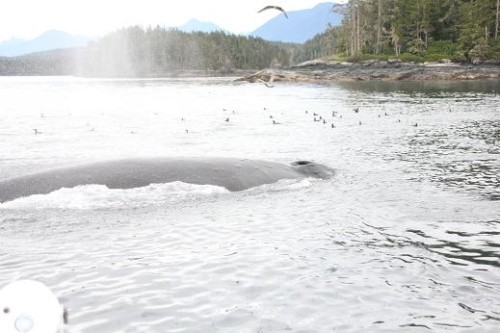
Yes that is the spotlight on the bow of our boat. The goal was the bald eagle flying our way that was about to come down on to the herring ball where the ducks are located. The eagle was a little slow as the humpback came up for lunch. When photographing eagles, orca, whales, seal, sea lions, dolphins or any other “wildlife” it is best to adopt the boy scout motto and “Be prepared.”.
